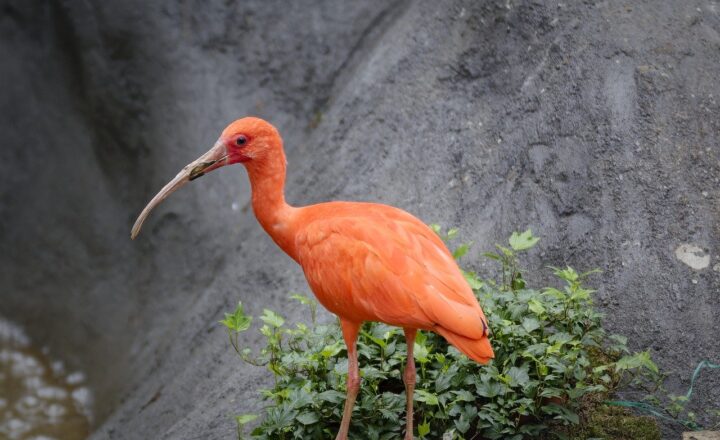Did You Know? 25 Stunning Facts About Our Planet and Universe
November 18, 2024

The universe is a vast and intricate place, spanning billions of years and filled with mysteries that scientists are just beginning to uncover. From the delightfully quirky behavior of our planet to the awe-inspiring wonders of the cosmos, here are 25 stunning facts that prove how extraordinary our Earth and universe truly are.
1. Earth is Not a Perfect Sphere
Earth is often depicted as a perfect sphere, but it is actually an oblate spheroid. This means it is slightly flattened at the poles and bulges at the equator due to its rotation. This shape causes the equatorial diameter to be about 43 kilometers (27 miles) larger than the polar diameter.
2. Water Comprises 71% of Earth’s Surface
Water covers approximately 71% of the Earth’s surface, with oceans accounting for about 96.5% of all Earth’s water. However, only about 2.5% of this water is fresh water, and most of it is locked away in glaciers and ice caps.
3. The Tallest Mountain is Actually Underwater
While most people think of Mount Everest as the tallest mountain on Earth, the title actually goes to Mauna Kea in Hawaii when measured from its base on the ocean floor. Mauna Kea rises about 10,210 meters (33,500 feet) from base to summit, far surpassing Everest’s 8,848 meters (29,029 feet) above sea level.
4. The Largest Living Structure is the Great Barrier Reef
The Great Barrier Reef in Australia is the largest living structure on the planet. Stretching over 2,300 kilometers (1,430 miles), it comprises thousands of reefs and islands and is home to an incredible diversity of marine life. It can even be seen from space!
5. There Are More Stars in the Universe Than Grains of Sand on Earth
Astronomers estimate that there are approximately 100 billion galaxies in the observable universe, each containing millions or even billions of stars. This means there are more stars in the universe than there are grains of sand on all the planets and beaches on Earth.
6. A Day on Venus is Longer Than a Year
Venus has an extremely slow rotation on its axis, taking about 243 Earth days to complete a single rotation. However, it takes only 225 Earth days to orbit the Sun, meaning that a day on Venus is actually longer than a year on Venus.
7. The Coldest Place in the Universe is the Boomerang Nebula
The Boomerang Nebula, located about 5,000 light-years away, has been found to be the coldest known natural place in the universe, with a temperature of approximately -272 degrees Celsius (-458 degrees Fahrenheit), just a degree above absolute zero.
8. Trees Can Communicate with Each Other
Trees can communicate and share nutrients through a network of fungi in the soil, often referred to as the “wood wide web.” They may send warning signals about pests or diseases, contributing to the health of the forest as a whole.
9. Our Solar System is Moving Through Space
Our solar system is not static; it is moving through space at a speed of about 828,000 kilometers per hour (514,000 miles per hour). This faster-than-sound speed is directed toward a point in the constellation Hercules known as the Solar Apex.
10. There are 3 Types of Rocks on Earth
The three main types of rocks on Earth are igneous, sedimentary, and metamorphic. Each type is formed through different geological processes, playing a crucial role in the Earth’s geology and history.
11. The Age of the Earth
Earth is estimated to be about 4.5 billion years old, which is roughly one-third the age of the universe, which is around 13.8 billion years old. Geological forces have shaped the planet over eons, crafting its surface and atmosphere as we know them today.
12. Lightning Strikes the Earth About 100 Times Each Second
Lightning is a common phenomenon around the world, with around 8.6 million lightning strikes estimated to hit Earth every day. That is about 100 strikes per second! The southern hemisphere experiences more lightning than the northern hemisphere.
13. The Moon is Slowly Drifting Away from Earth
The Moon is gradually drifting away from Earth at a rate of about 3.8 centimeters (1.5 inches) per year. This gradual increase in distance affects tidal patterns and the length of days on Earth over millions of years.
14. A Day on Mercury Lasts Longer Than a Year
Mercury rotates so slowly on its axis that a single day (one full rotation) takes approximately 176 Earth days. However, it only takes about 88 Earth days to complete an orbit around the Sun, making its days longer than its years.
15. Jupiter’s Great Red Spot is Shrinking
Jupiter’s Great Red Spot is a massive storm that has been raging for at least 350 years, but it is shrinking. Recent observations show it diminishing in size, leading scientists to speculate about its future.
16. The Earth’s Inner Core is As Hot as the Sun’s Surface
The inner core of the Earth is estimated to be about 5,300 degrees Celsius (9,500 degrees Fahrenheit), roughly the same temperature as the surface of the sun. This extreme heat is due to the immense pressure and radioactive decay within the Earth.
17. Saturn’s Rings Could be Gone in 100 Million Years
Saturn’s rings are composed of ice and rock particles, but they are gradually disappearing. Research suggests they may vanish within the next 100 million years, which is a brief period on cosmic timescales.
18. There are More Trees on Earth Than Stars in the Milky Way
A study published in 2015 found that there are approximately 3 trillion trees on Earth, far surpassing the estimated 100 to 400 billion stars in the Milky Way galaxy, highlighting the planet’s vast biodiversity.
19. The Eiffel Tower Can Be 15 cm Taller in Summer
Due to thermal expansion, the iron structure of the Eiffel Tower can grow approximately 15 centimeters (6 inches) taller during the hot summer months as the metal expands.
20. The Hottest Recorded Temperature on Earth is 56.7°C
The hottest temperature ever recorded on Earth was 56.7 °C (134 °F) in Furnace Creek Ranch, California, on July 10, 1913. This scorching temperature dares as one of the hottest places on Earth.
21. Earth is constantly being Bombarded by Asteroids
Every day, Earth is hit by about 17 meteoroids, most of which burn up in the atmosphere before they can reach the surface. Only small fragments can survive and land as meteorites.
22. The Universe is Expanding
The universe has been expanding since the Big Bang, approximately 13.8 billion years ago. This expansion continues today at an accelerating rate, driven by a mysterious force known as dark energy.
23. The Amazon Rainforest Produces 20% of the World’s Oxygen
The Amazon rainforest plays a crucial role in the global ecosystem by producing about 20% of the world’s oxygen through photosynthesis, making it an essential resource for life on Earth.
24. The Phenomenon of Blue Moons
A “blue moon” refers to the second full moon in a calendar month, which happens on average once every 2.7 years. This rare event has inspired numerous expressions and idioms throughout history.
25. The Earth Is Unique in the Solar System
Despite the ongoing search for extraterrestrial life, Earth remains the only known planet to support life, thanks to its unique combination of atmospheric conditions, liquid water, and suitable temperatures.
Conclusion
Our planet and universe are filled with astonishing facts that highlight the beauty, complexity, and diversity of life. From Earth’s geological wonders to the galaxies beyond, we are reminded of the vast, interconnected systems we inhabit. As we learn more about these marvels, our appreciation for our home and the universe continues to grow. Let’s foster a deeper understanding and respect for this extraordinary harmony of existence, ensuring its beauty is preserved for generations to come.








